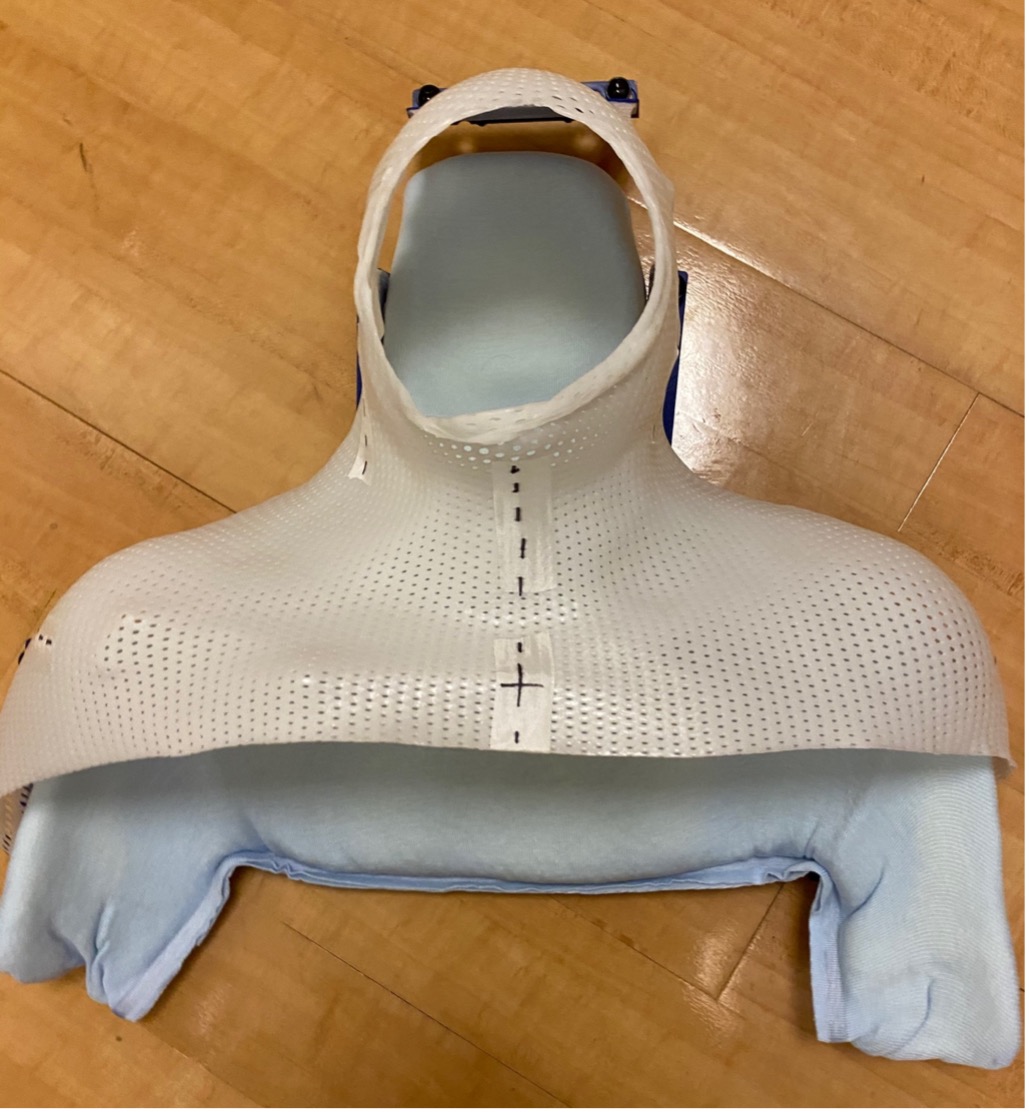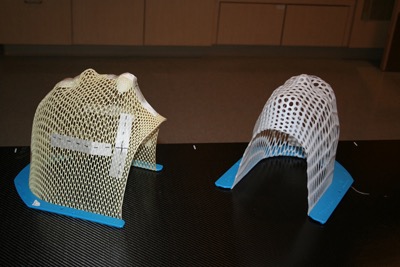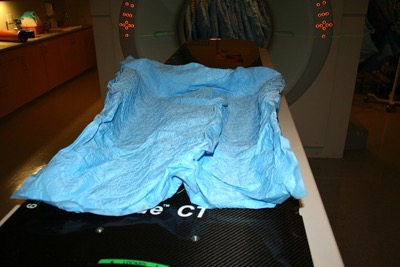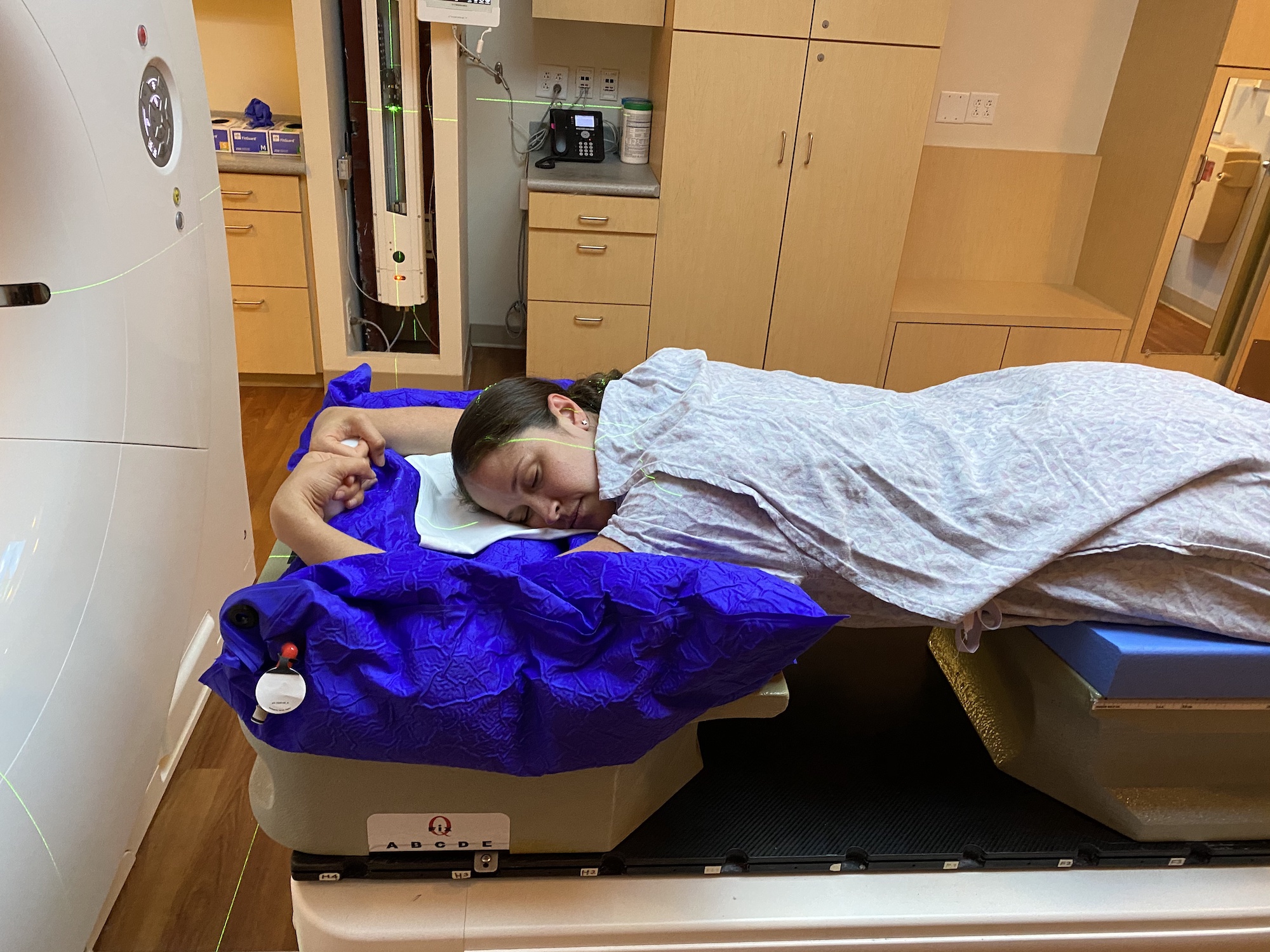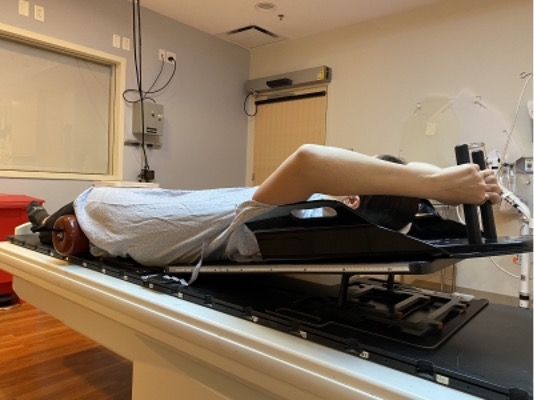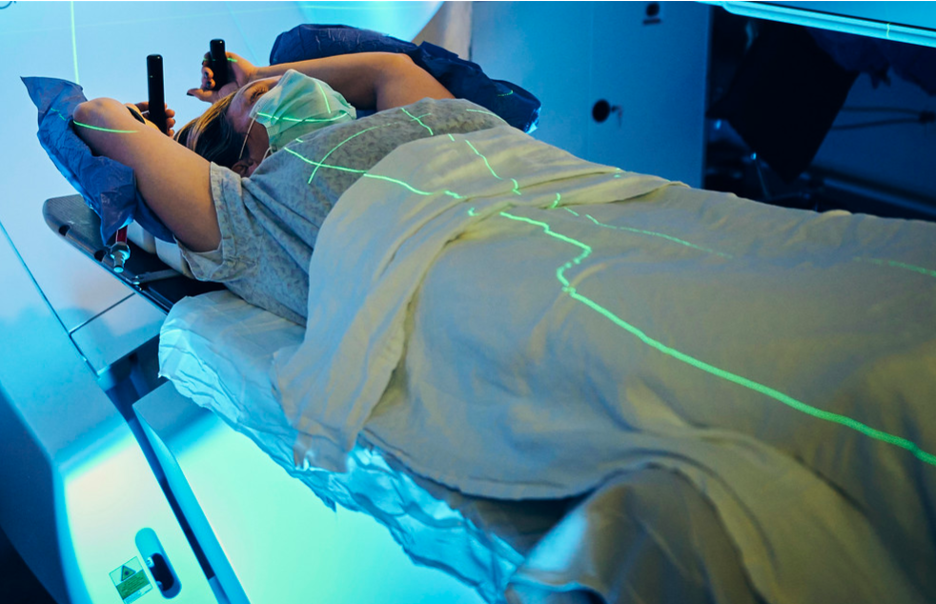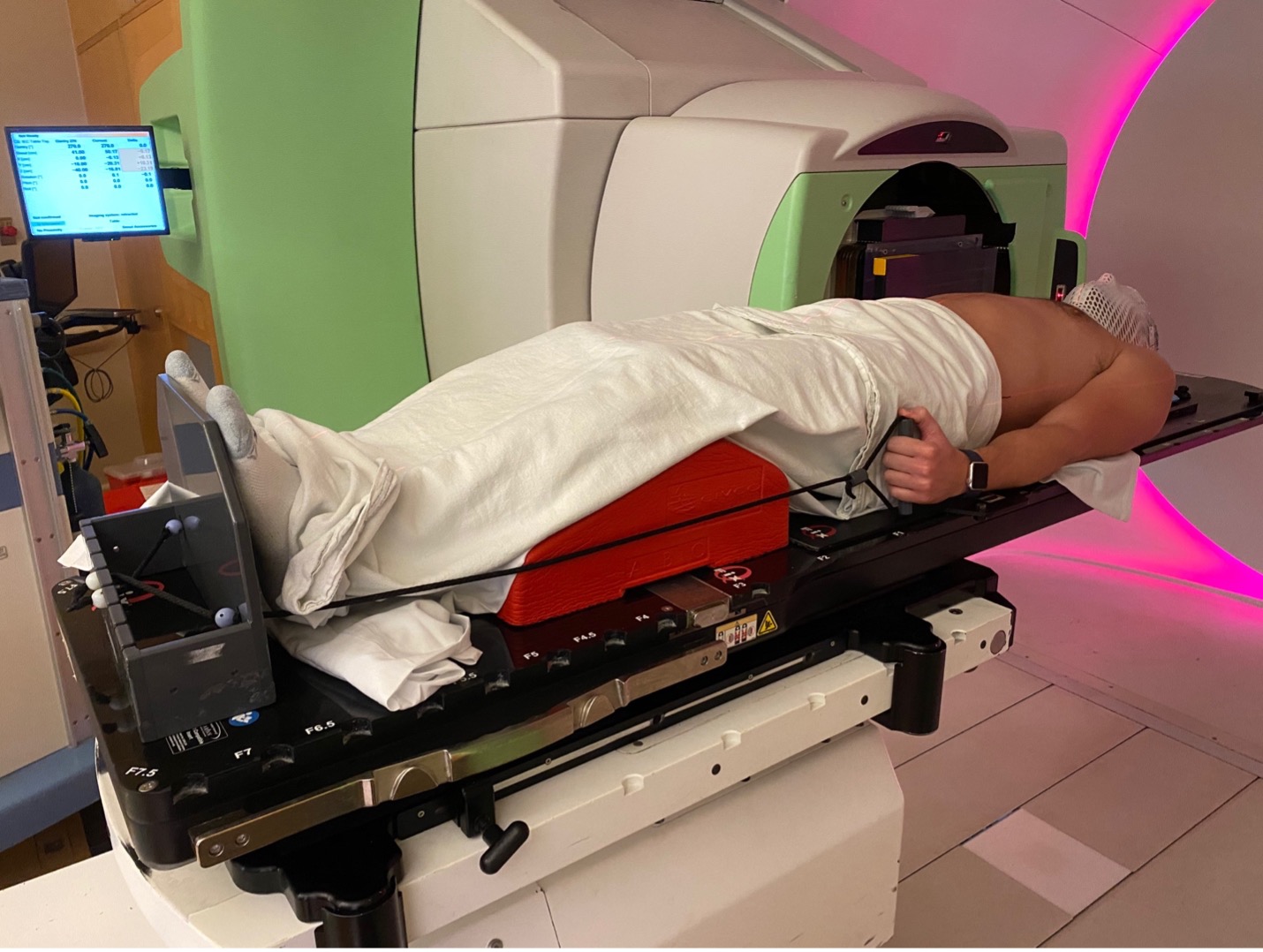Radiation Therapy Immobilization Devices
Immobilization devices are tools used to help you stay in the same position for all your radiation treatments. There are custom and universal devices and most patients will need to use at least one for treatment. The type used depends on your treatment plan and the part of your body being treated.
Custom Immobilization Devices
Custom immobilization devices are made just for you. They will be fitted to your body.
Masks and Headrests
Masks and headrests can be used together or on their own. They are used for treatment to the brain, head & neck, and upper spine areas. Masks can come in many shapes and sizes, but all have the same use. They are meant to keep your head in the same place during treatment.
Molds, Vac-Lok Bags, and Casts
The most common types of molds or casts are called alpha cradles or vac-lok bags. Alpha cradles are made by pouring foam material into a sealed plastic bag. Once the foam is in the bag you will lie on top of the bag and the foam will form around your body for about 15 minutes. Alpha cradles are made for you and are used for your whole treatment course and then thrown away.
Vac-lok bags are custom devices that can be reused. Instead of foam, the sealed bags are filled with small Styrofoam balls. You are placed on top of the bag and the bag is molded around the area of your body that will be treated. A vacuum pump is used to suck the air from the bag. The bag will become hard and hold the shape of your body. This is a custom device, but air can be put back into the bag and the bag can be reused.
Both types of molds are meant to keep you in the same position every day for treatment. They can be used to keep your arms, legs, and chest from moving (immobilized).
Universal Immobilization Devices
Universal immobilization devices have settings that can be changed and used for any patient (universal devices).
Breast Boards
There are two types of breast boards, one where you lie on your back (supine breast board) and one where you lie on your stomach (prone breast board). Breast boards are made of many pieces that can be moved to fit your arms, wrist, head, and shoulders. The breast boards use gravity to pull your breast down into an ideal treatment position. Your provider will let you know which breast board will work best for your treatment.
Knee and Foot Locks
Knee and foot locks are used to keep you still if you are getting radiation to the pelvic area. The knee and foot locks can be adjusted to make sure you are comfortable and in a good position for treatment. They can also be used to make sure you are in the same position every day.
Belly Board
Belly boards are often used when the pelvic area is being treated and your small bowel is too close to the treatment area. You will be lying on your stomach (prone position) on the belly board. The belly board has a large hole in the middle of it so the small bowel can be pulled down and out of the way of the radiation. This helps lessen side effects. There is a ruler on the side of the belly board to help position you on the board in the same place every day.
Wing Board
Wing boards are often used if you are getting radiation to the chest area. You lie flat on your back with one or both arms over your head holding onto poles. Your head will be resting on a headrest. This headrest may be a universal device, a custom device, or a combination. The poles and the headrest positions can both be changed. Wing boards may be used with or without a vac-lok.
Shoulder Retractor
Shoulder retractors are used if you are getting radiation to the head and neck. They are used along with a mask and keep your shoulders and clavicles in the same position. There are ropes that can be adjusted to make sure you are comfortable.
Positioning is very important in radiation therapy, and you may need to use immobilization devices. If you have any questions or are not comfortable during treatment, let your provider know. They can answer your questions and make sure you are comfortable.
References
Cancer.Net. What to expect when having radiation therapy. 2022.
National Cancer Institute. External beam radiation therapy for cancer. 2018.
